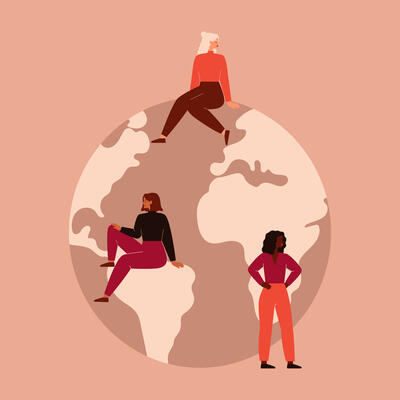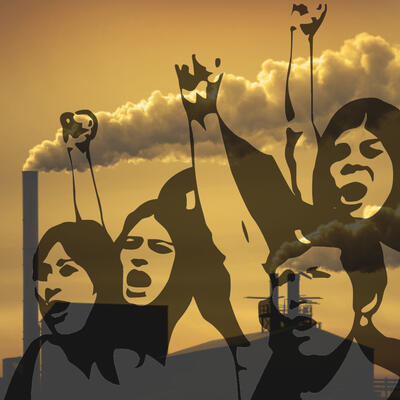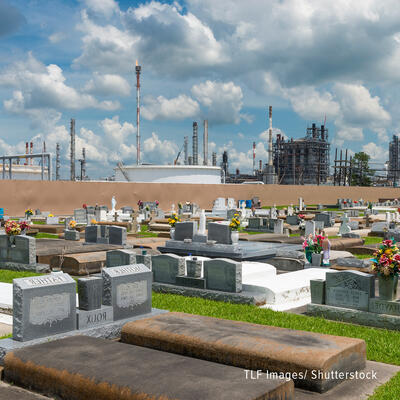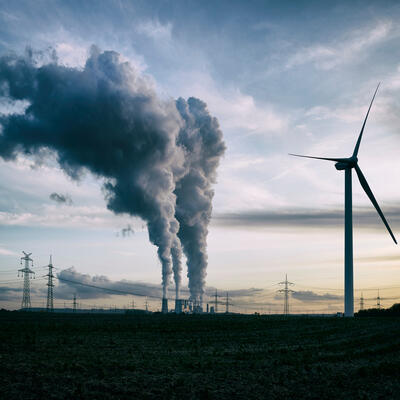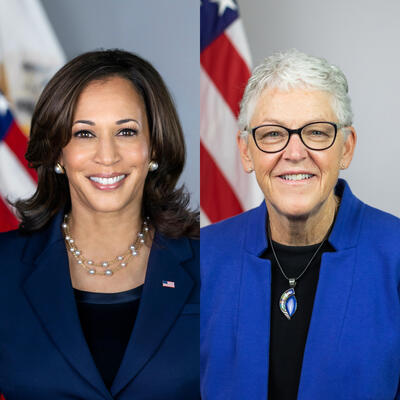
Breaking Through: A Year of Climate Conversations
Guests
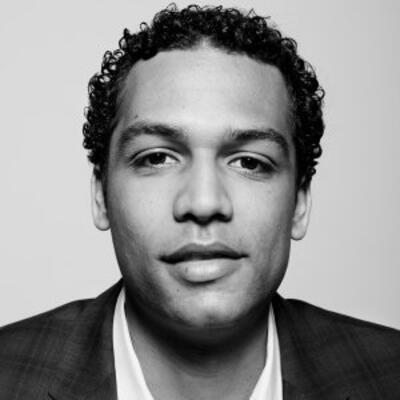
Justin Worland
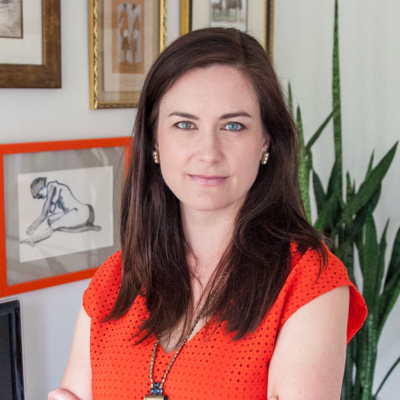
Katharine Wilkinson
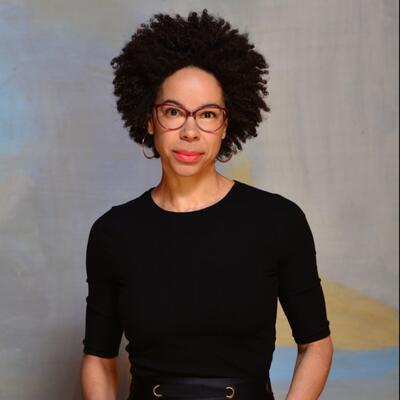
Ayana Elizabeth Johnson
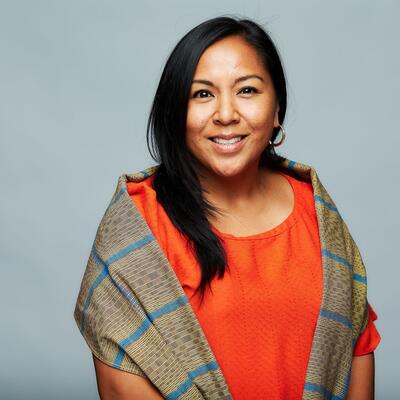
Darryl Molina Sarmiento
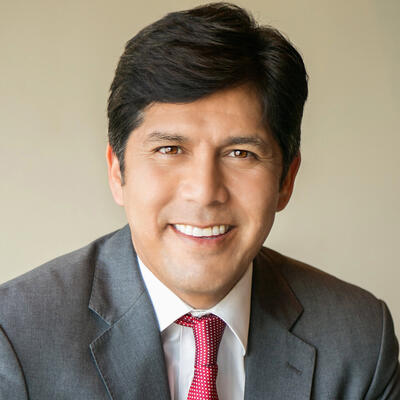
Kevin de León
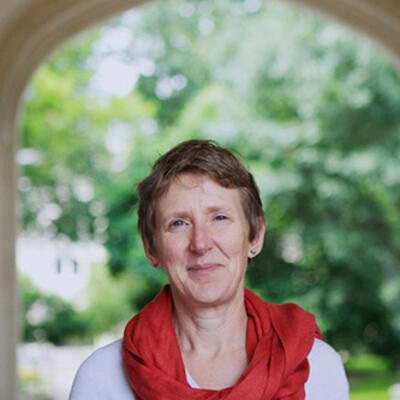
Susan Clayton
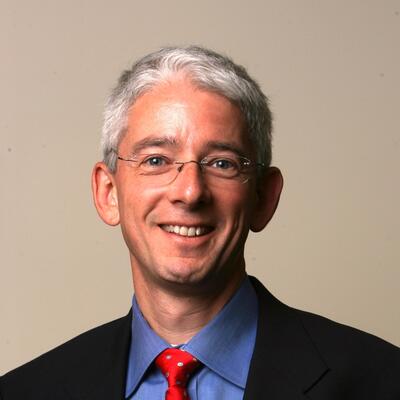
Peter Atwater

Aaron Bernstein
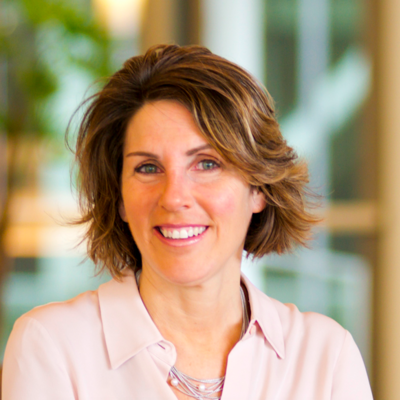
Amy Myers Jaffe
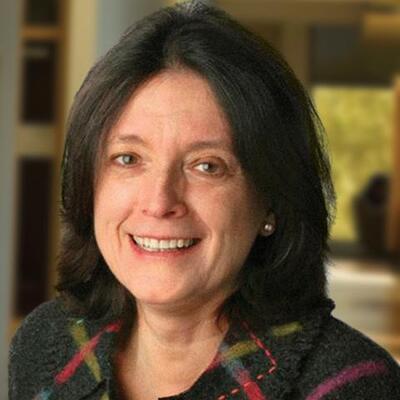
Kathleen Day
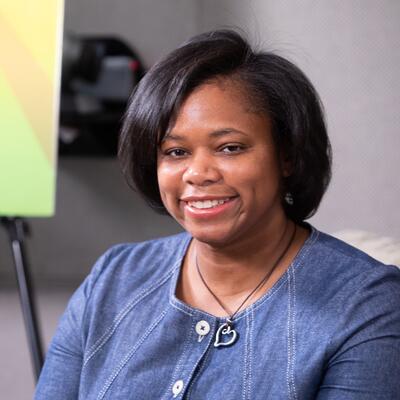
Tamara Toles O'Laughlin

Gina McCarthy
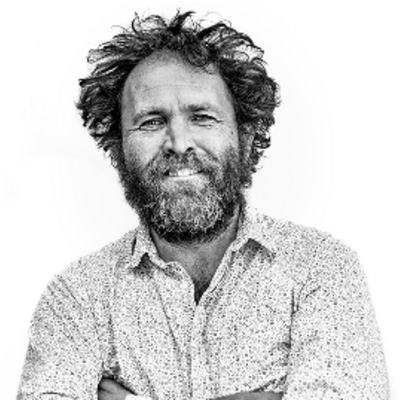
Saul Griffith

Chase Purdy

Sophie Egan
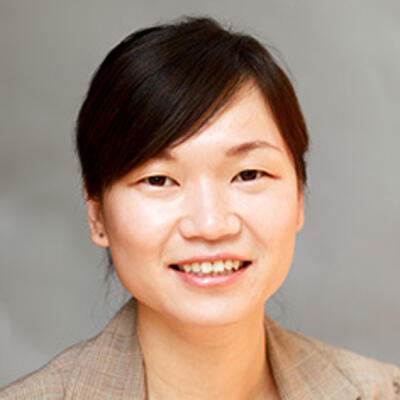
Hui He
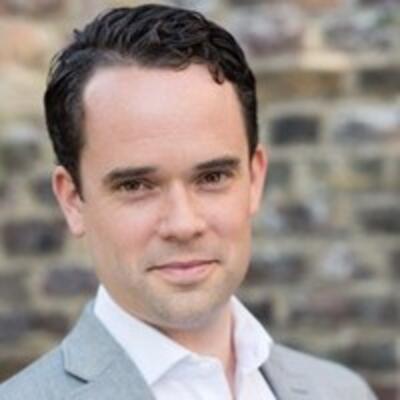
Colin McKerracher
Summary
In this special episode we look back at the climate stories of 2020 by listening to excerpts from a year of climate conversations, beginning with a post-election update from Justin Worland, Senior Climate Correspondent for TIME.
-
A Feminist Climate Renaissance (10/09/20)
-
What Is A Just Transition? (1/31/20)
-
COVID-19 And Climate: Human Response (4/03/20)
-
COVID-19 And Climate: Implications For Public Health (4/17/20)
-
COVID-19 And Climate: Economic Impacts (5/01/20)
-
Climate Ambition (10/16/20)
-
Tech to the Rescue? (10/02/20)
-
Billion Dollar Burger (8/07/20)
-
Last Call for Gasoline (11/27/20)
Full Transcript
Greg Dalton: This is Climate One. I’m Greg Dalton. [pause] 2020 has been a year like no other. The president was impeached, a new one was elected, and in between, crises raged on race, covid and climate.
[montage]
Greg Dalton: These crises have exposed deep fissures in our social, political, and economic lives. But the first step toward solving those issues... is talking about them.
Ayana Elizabeth Johnson: The naïveté to think that we could somehow magically engineer a solution that doesn't address the root problem. You know, we’re gonna need to dig a little deeper and craft a way forward that is actually going to work.
Greg Dalton The Year in Climate Conversations. Up next on Climate One.
---
Greg Dalton: Climate One conversations feature all aspects of the climate emergency: the individual and the systemic, the exciting and the scary. I’m Greg Dalton. On this special episode we’ll look back at the climate stories of 2020, by listening to excerpts from a year of climate conversations. With President-elect Joe Biden building a team of climate veterans, including John Kerry, the effort to decouple economic growth from carbon pollution is in a very different place than it was when the year began.
Joe Biden: For the first time ever, we will have a presidential envoy on climate.
John Kerry: Mr. President-elect, Vice-President-elect Harris, I look forward to getting to work.
Greg Dalton: Shortly after the election, TIME Senior Climate Correspondent Justin Worland retweeted, “Where the virus was the worst, voters supported Trump the most.” Worland further pondered whether, as climate change worsens, those affected will support leaders who offer climate solutions or those who deny there's a problem.
Justin Worland: There's a good question about whether people are going to look for the easy answer when it comes to climate change, whether they're going to look for really substantive solutions. And so, this connection just got me thinking and you know it is pretty clear you look at places like South Florida which voted for Trump more so in 2020 than in 2016 despite the growing concern or evidence of trouble with regard to climate. So, I think about this question a lot and I think a lot about whether climate change is going to fuel continued political uncertainty whether it's only actually going to lead to solutions.
Greg Dalton: You write about climate and race. How do those issues converge or not in the 2020 election?
Justin Worland: Yeah, there was a huge convergence of these discussions about climate and race in the wake of the George Floyd protests. You saw this coalition that had been conforming for really some time of environmental justice activist and climate activist that is grown for maybe the past couple years come to support Joe Biden to push him on policies related to climate and race. You even have things like, you know, Kamala Harris introducing legislation related to environmental justice and climate just a week before she was selected as the vice-presidential nominee. So, a really interesting convergence of these two discussions
Greg Dalton: What do we know about how Joe Biden is infusing climate change into his transition. What indications do we have about how ambitious he’ll be on climate and how he will go about it?
Justin Worland: Yeah, so the statement that we hear a lot from people within the transition within the campaign people who have his ear is really the climate is going to be embedded in everything that he does. This phrase that we hear over and over again as whole of government approach. So, you know, climate is no longer just the purview of the Environmental Protection Agency but it's something that comes into consideration if you're looking at building housing or supporting housing via the Department of Housing and Urban Development or when you're talking about how the Biden administration will approach foreign-policy. And so, this is also an important reality an important approach when you consider the reality the possibility of a divided Congress, right. So, it might be very difficult to pass legislation, but a lot of the way that the Biden administration can shape and push climate ambition is going to be through the agencies and through places that or avenues that might not be the traditional avenues for climate policy.
Greg Dalton: During the Democratic primary, candidates one up each other with their climate plans. Joe Biden initially had about a $2 trillion plan, Kamala Harris plan was 10 trillion of public and private funding and called for reaching net zero emissions by 2045. I had to look up Kamala’s climate plan. Does anyone remember it now and is there any evidence of her influencing the new administration's plans on climate?
Justin Worland: Well, that’s a very good question. I mean around the time that she was selected, there was a lot of controversy over the question of the Green New Deal. And the fact that she had vocally supported the Green New Deal the resolution and then of course Joe Biden had tried to thread this really difficult needle where he supports the framework but not the resolution. All of which is to say the campaign was very clear that this is Joe Biden's campaign. it's not Kamala Harris' campaign and she supports VP Biden's agenda. You know, of course, I assume there's going to be some influence when she is behind the scenes speaking in meeting with the President-elect, but certainly I think they are very clear that this is his campaign and his agenda. And some of the more aggressive things that she might've supported are not part of his agenda.
Greg Dalton: What are you looking at into 2021? What are you looking forward to gauge the Biden-Harris administration’s kind of approach to climate? What are you looking for ahead in ’21?
Justin Worland: The one thing I think that is going to be evident from the get-go is to what degree is Biden committed to making climate measures part of the stimulus package. And to what degree is getting a really big emphasis on clean energy and other climate measures as part of the stimulus a deal breaker. So, you know, if Biden is really willing to make that a priority and not allow that to be something that kind of just gets lost in the shuffle, I think that’s a really good indication of the importance that climate is playing for his administration.
Greg Dalton: Justin Worland is Senior Climate Correspondent at Time.
Justin Worland: Thanks for having me.
Greg Dalton: The election of Kamala Harris as vice president of the United States has many profound implications for gender and racial equality. What’s less obvious is how having a woman of color as vice president relates to embedded thinking about fossil fuels and climate disruption.
Katharine Wilkinson: The roots of the challenge are actually in extractive capitalism, which is entangled with racism, white supremacy and patriarchy.
Greg Dalton: That’s Katharine Wilkinson, Vice President of Project Drawdown. She and marine biologist Ayana Elizabeth Johnson are the co-authors of All We Can Save: Truth, Courage and Solutions for the Climate Crisis, which brings together women artists, writers and changemakers at the forefront of climate action.
Katharine Wilkinson: Women and girls and non-binary folks are disproportionately harmed by the impacts of climate. And that's especially true under conditions of poverty, for folks who are rural, live in the global south, women and girls who are indigenous, black of color. These things start to intersect and because climate is a vulnerability multiplier or we might think of it as an injustice multiplier, it has that effect on people's lives and communities. But one of the things that I really learned from Mary Robinson, former president of Ireland and a self-proclaimed angry granny for climate justice, is that when you are closer to the problem, you’re necessarily closer to the solutions. And so that's the part of the story that's actually the most important and Ayana and I think it's the part of the story that has been way too neglected.
Greg Dalton: Ayana, when you're close to the problem maybe there's some shame and culpability and therefore resistance to recognizing the interconnectedness that Katharine just talked about. I find that younger people see that interconnectedness and older people. What do you see?
Ayana Elizabeth Johnson: I think there’s two different kinds of being close to the problem, right. There’s the kind Katharine was just talking about, which is you’re experiencing the impacts of climate change. And then there's close to the problem like you are creating the problem. Like you are the fossil fuel companies you are the politicians that are stopping progress. You are people who are rejecting excellent climate science that we need to be making decisions on. And, you know, those are two very different things. And so, when we think about the work that so very much needs doing it’s allowing people who are living in communities that are bearing the brunt of the climate crisis to have a seat at the table, a leading role in crafting what those solutions look like. Whether you are a community in the Gulf that’s getting pummeled by hurricanes, a community on the West Coast dealing with fire. We need to be much more creative and collaborative, collective, less driven by ego, more driven by curiosity and creativity, and an understanding of the, you know, communal stake in the outcome. And these more nurturing mending approaches tend to be stereotypically considered more feminine. And so that is the energy, the perspective, the expertise that finds itself throughout this book in addition to the rigorous science. In addition to the deep knowledge of agricultural practices. In addition to legal prowess. It is the ways in which we use those tools that I think hold so much potential for just a completely new wave of leadership which is clearly what we need because you know the leaders we’ve had to date have certainly not gotten us where we need to go.
Greg Dalton: Our country’s been mourning the passing of Ruth Bader Ginsburg and I’d like to mention her and speak to her kind of feminine power at this moment when you’re talking about more feminine leadership in climate. She’s made some very important environmental rulings herself. So how do you connect RBG to this?
Ayana Elizabeth Johnson: An absolute expert and a titan in her field. You know, and a devoted you know grandmother at the same time, like really caring about the nurturing across generations and not taking any crap. And that combination of just sort of intellectual might and an ability to get things done persuasiveness expertise. And then also the association of the feminine with weakness is one that we absolutely need to shatter because that is simply untrue. I mean anyone who can birth a child, like miss me with calling feminine power weak. And so, there's this opportunity to say we need a welcoming collective communal creative nurturing approach to climate solutions that ensures that everyone can find their role in this work.
Greg Dalton: Writer and marine biologist Ayana Elizabeth Johnson on the feminist climate renaissance. With events in 2020 bringing systemic racism into even starker relief, making a just transition to a clean economy has increasingly become a part of the climate conversation.
Darryl Molina Sarmiento: Environmental justice is a civil rights issue. And we have to use those civil rights in order to protect our environmental rights.
Greg Dalton: Darryl Molina Sarmiento is Executive Director of Communities for a Better Environment, an advocacy group based in Los Angeles. She was joined by former President of the California State Senate and current Los Angeles City Councillor Kevin de Léon, to talk about what a just and equitable transition from fossil fuels would look like.
Darryl Molina Sarmiento: So in the community in which we organize in, in Wilmington, California and the city of Los Angeles, you have oil drilling operations that operate 24 hours a day with trucks coming in at all hours of the night. We have exposed diesel rigs versus communities in more affluent parts of Los Angeles have electric rigs and they are fully enclosed and they have limited hours of operation. And so we need to challenge the way that permitting is happening and we continue to do that. But beyond that we are pushing for, you know, a 2,500-foot buffer zone in the city of Los Angeles between sites extracting oil and sensitive receptors such as where people live and where children play.
Greg Dalton: Quite a struggle. And there’s about 300 jobs at stake for that big change?
Darryl Molina Sarmiento: Right, exactly. So when we’re talking about just transition if you have over half of the oil drilling sites in Los Angeles concentrated in a low income community of color, there are currently within that situation 300 jobs at risk. And so this is the perfect opportunity for us to address the issue of just transition with this case to find the solution for these 300 jobs in order for us to move away from this harming industry right next to our communities.
Greg Dalton: Kevin de León, what's your idea of a just transition? It's a term that’s used quite it means different things to different people. What's your conception of a just transition?
Kevin de León: A couple things. One is we clearly have to decarbonize our economy. We have no other choice. The scientists have spoken loud and clear. This is a political issue. For those folks who are working in the extractive industries who are working in refineries. We have to make sure that we can transition these folks to a clean energy economy making sure that their salaries or wages or benefits are commensurate with what they’re actually, you know, receiving right now. For those who have been historically and socioeconomically marginalized for a whole variety of issues due to ethnicity due to immigration status due to their zip code. We have to make sure that we can provide a good paying job with good benefits in the clean energy space. So the one thing that we’ve done here in California is to date we have created 500,000 jobs in the clean energy space. Now I wanna put this in context because that is 10 times more jobs in the clean energy space in California than there are coal mining jobs in all of America. So the impact that you can have not just in California but in poor rural states that historically have been dependent for a whole variety of reasons. And I believe, this is my perspective, that the politicians who represent them at the federal level have failed them quite dramatically knowing that coal consumption domestically, as well as internationally is going down. So they haven't positioned and transitioned their constituents to clean energy economy because it’s a political situation not a scientific or economic situation. So you want to make sure that regardless if you’re Latino, African-American, White, Asian-American racially mix that especially if you're at the lowest economic strata that that just transition allows you to have a good paying job to put a roof over your child’s head to pay for the clothes on their back and food on the table. And at the same time when you pay out of your pocket that energy bill that we democratize the benefits of our climate change policies to make sure every single individual again regardless of who you are and regardless of where you come from has access to the latest the greatest the most innovative and greatest technology. If we don't, then we’ll continue to be a very polarized society where only those who have the highest educational attainment and the financial wherewithal to access that greatest and latest green technologies will be the only ones benefiting. So that means if you live in wealthy neighborhoods whether it's in California or in the country then you have energy-efficient home you have rooftop solar you have a charging station and you have an electric vehicle. But if a lot of folks don't have it, we’ll never meet our macro target goal. So it’s out of our own self-interest for our planet and for our own public health that we make sure that we have to have a just transition for everybody.
---
Greg Dalton: Los Angeles City Councilman Kevin de Léon, on how to bring everyone along on the road to a clean economy. You’re listening to a Year of Climate One conversations. Coming up, climate change in a time of pandemic.
Susan Clayton: We don't have a lot of people who are very prominent talking about how scary climate change is. But we do have a lot of people talking about how scary COVID-19 is.
Greg Dalton: That’s up next, when Climate One continues.
---
Greg Dalton: This is Climate One. I’m Greg Dalton, and we’re looking back at the Year in Climate One Conversations. U.S. elections aside, the biggest story of 2020 was the most widespread social disruption of our lifetime.
[covid clip(s)]
Greg Dalton: As the covid pandemic unfolded with unprecedented drama and speed, we explored how the climate conversation changed in the wake of the coronavirus.
Peter Atwater: You saw this extraordinary energy around climate change that I'm worrying now has been evaporated because we've gone from an us, everywhere, forever mindset to a me, here, now mindset.
Greg Dalton: Peter Atwater is Adjunct Professor of Economics at the College of William & Mary. He joined us along with Susan Clayton, Professor of Psychology and Chair of Environmental Studies at the College of Wooster, to compare the human responses to invisible and deadly threats of COVID-19, and carbon pollution.
Susan Clayton: Disease is a lot more immediate, a lot more scary than the idea that we’re gradually destroying or harming the atmosphere and the ecosystem. So we definitely respond to that idea that our personal health is compromised. But I also think it's important to recognize that both of these things because they are invisible people are kind of relying on, they need to have the situation interpreted for them. So there's a really big role for the social media for political figures and other people who are prominent invisible to explain to them. In one case we don't have a lot of people who are very prominent talking about how scary climate change is. But we do have a lot of people talking about how scary COVID-19 is.
Greg Dalton: Peter Atwater, you likened this moment where we have this looming threat that you liken it to when Hurricane Katrina was barreling down on the Gulf Coast. And there's this big scary thing offshore it’s coming we can kind of watch it coming our way. How do you compare that Katrina moment to what we've been watching experiencing with COVID-19?
Peter Atwater: So what you could see was that particularly from an American perspective, when the virus was contained in China that was the first narrative that went along with that, there you have an existential threat that was far, far away and really not a threat with the view that it was contained. And what I could watch and see was the narratives brought it closer and closer to us. And one of the things about threats is that our anxiety rises exponentially as threats become closer and closer to us from a perception standpoint. And so you could see the level of anxiety turn to panic as it went from being a foreign contained to being near us to now being among us.
Greg Dalton: Right, there was the Tom Hanks moment for the coronavirus that was certainly someone who is widely beloved. Tell us about that American symbol of what that meant.
Peter Atwater: Yeah, so I think you had with Tom Hanks it was interesting within a half an hour you had the report that he and his wife had been impacted by the virus as well as the news from the NBA that the Utah Jazz has been infected. And I think those symbols are really powerful and important in terms of bringing that familiarity that Susan discussed very close to us. So suddenly people felt that if Tom Hanks had it, if an NBA player had it, it was likely to impact me. And what you could then see was this cascading impact in terms of cancellations and closures. That to me was one of the major tipping points of this crisis is that through that conveyance the symbols the virus outbreak suddenly felt right upon us and then you saw people respond accordingly.
Greg Dalton: And Susan Clayton, that makes me think of vulnerability it’s like oh my gosh if Tom Hanks can get it, you know, if Private Ryan can get it what is that mean about a normal person. So talk about the vulnerability and how we assess our different vulnerability to these different threats.
Susan Clayton: Absolutely and it’s not just Private Ryan, it’s Mr. Rogers. So I think there was that that Tom Hanks is not only somebody that everybody recognized and therefore it became much more real and immediate. But we do have this recognition probably at some instinctive level that we're all vulnerable to disease. We can feel very threatened by it. We like to avoid things that might lead to contamination. And unfortunately that kind of reaction sometimes underlies a lot of racist responses particularly in this case. The idea that it’s a foreign a virus that is invading the American body politic certainly affecting some people's reactions. So that vulnerability to something coming from outside and something that in the case of a virus literally enters your body is disturbing on a very basic instinctive level.
Greg Dalton: Susan Clayton, Professor of Psychology at the College of Wooster, on the human response to the twin crises of covid and climate. The novel coronavirus that jumped from bats to humans has also highlighted the related public health challenges posed by infectious disease and climate disruption.
Aaron Bernstein: What we need to do now is recognize we have a window of opportunity to really flatten the curve when it comes to climate change
Greg Dalton: Aaron Bernstein is a pediatrician and Interim Director of The Center for Climate Health and the Global Environment at the Harvard School of Public Health. He sees the implications of COVID and climate for public health as fundamental truths now staring us in the face.
Aaron Bernstein: Nature has given us a few shots over the bow here with emerging infections COVID is the most recent example. But we've got MERS, SARS, HIV pandemic influenza. These are all diseases that had come into people from animals. And if you look at these emerging diseases more probably the majority are wild animals. And so what ultimately is staring us in the face is the reality that we have taken advantage of nature to the point where we’re putting ourselves at risk. And on top of that, we know very clearly what we can do to make a difference to prevent things like COVID. And among the things that really matter are climate solutions and in fact, in many ways pandemic solutions are climate solutions. And now is the important time to be talking about this.
Greg Dalton: So be specific. What are some things that could reduce pandemic that could also reduce carbon pollution and climate change? What are some of those co-solutions?
Aaron Bernstein: Big one is deforestation. We think about tropical forest lost the sort of a moral crisis, you know, what a terrible loss to everyone and particularly to the species that are in tropical forest. But we know from many examples that the chopping down forests increased risks of the spillover pathogens from animals into people. We don't know that exactly with COVID but in other diseases that have come out of bats, Ebola, you may remember the most recent bat Ebola outbreak in West Africa. The evidence suggests that deforestation in West Africa actually may have pushed bats into parts of West Africa. They were in before and as you may know the most recent Ebola epidemic in West Africa was in a part of Africa that they happened before. And so you know, preventing deforestation is a climate solution preventing deforestation is also a solution to prevent disease emergence. We know air pollution is bad for everyone's health in all kinds of ways. In the evidence we have suggests that particularly with respiratory infections like COVID and we don't have direct evidence on COVID but in its first cousin which was SARS. People exposed to more pollution were twice as likely to die based upon the evidence that we have. And so we have evidence that air pollution not only can make people sicker but it may make people more likely get infected with these pathogens as well. So burning less fossil fuel which in China kills an estimated 1.6 million on an annual basis may be contributing to the spread of diseases like COVID there and elsewhere.
Greg Dalton: Aaron Bernstein from the Harvard School of Public Health, on what the covid pandemic can teach us about climate and infectious disease. You’re listening to a Year of Climate One conversations. Along with the public health crisis, the coronavirus shutdown caused an economic collapse, that happened faster and hit deeper than most people could have imagined.
Kathleen Day: This crisis has served to expose some of the vulnerabilities of the economy. And one of those is that we have such a large number of people living from check to check.
Greg Dalton: Kathleen Day is Finance Lecturer at Johns Hopkins University, and author of the recent book Broken Bargain: Banks, Bailouts, and the Struggle to Tame Wall Street. She was joined by Amy Jaffe, Director of the program on Energy Security and Climate Change, at the Council on Foreign Relations, to talk about the covid recession and economic resilience.
Amy Jaffe: Well, you know, I like to have a two historical references that come from the oil market and I think they’re both important. After September 11, Americans inside the United States stopped flying for a period of time. And actually we did not go back to normal domestic travel until 2004. So that can give you an idea of the challenge that we face getting people back out and circulating in airplanes again. All because this is actually probably less irrational than the way people felt after a terrorist attack, which is what are the chances you’re gonna had every week a terrorist attack in the airport. That was very low probability. So the second one I’d like to tell is what happened after SARS in China. And China SARS hit in the end of 2002 and Chinese citizens in Beijing and other big cities became afraid to use public transportation. And so car sales in 2003 in China were up 30%. So you do get these responses and then they sort of lay themselves out over time and it is not quite as I think the downturn can be very sudden. And I think the recovery is more gradual than maybe people are thinking.
Greg Dalton: And Amy Jaffe, there was an oil price war before this between Russia and Saudi Arabia. What's that about and isn’t cheap energy good for American consumers who are pinched right now, they're not driving but isn't generally cheap energy is good for the economy?
Amy Jaffe: Well, typically cheap energy is considered sort of like a stimulus. You know, if you’re a household you’re spending less on fuel and you’re spending less on travel and it stimulates people to travel. And on the flip side is for businesses I’m not having as high an energy cost so I can hire more people and support my business and the economy that way. The problem is because of the pandemic we’re not seeing a lot of those responses. It’s not really serving as a stimulus in the same way. People are not likely to take a driving vacation for Memorial Day weekend unless something really changes. I think it’s gonna be a while before people are back at the airports. So some of these traditional things that boost the economy when energy prices are low is gonna be much harder time to actually get that boost effect.
Greg Dalton: Kathleen Day, what are some lessons from past crises in terms of what works pulling America out of a recession. Of course it depends on what put it in the first place but what are some lessons from history?
Kathleen Day: Yeah, one thing is debt. And one of the lessons that we learned the hard way in the last crisis is that it wasn't that people needed more credit they needed less debt. So the stimulus package now if you give people a check and then they spend it they don't need one check they need a continuous source of income that they can use to pay their groceries and their rent. So I use this example of one of my local pizza places here in DC. The owners made a decision to close so that their employees could go on unemployment that gives them a regular check. Those people will be better off than waiting for a $1200 one-time stimulus. So many people in this country -- this crisis would be bad no matter what economically. But it has served to expose some of the vulnerabilities of the economy anyway. And one of those is that we have such a large number of people living from check to check. So any economic dislocation reverberates many times more with that group than with people who can work from home and continuing to get a paycheck and there’s other spots that are vulnerable. But how quickly we’ll recover, people are gonna be dying to get out of their house to get haircuts to go and see people again to go to work. We may never bring the handshake back the way it was. Maybe people will forever use fewer paper towels, I know I will. But I think transportation maybe not but I don't think there’s gonna be the fear of flying the way there was after the terrorist attack. But what I’m hoping is the residual effectiveness will be maybe to make people believe maybe this pandemic has something to do with climate. In any case, maybe we should take science more seriously and not dismiss it. And maybe some of those hundred thousand people who are employed in fossil fuels could be better deployed in renewable energy and in helping the infrastructure. So I'm hoping there's going to be some more thought about how to bolster the economy long-term and not just look for quick fixes from cheap energy.
Greg Dalton: Kathleen Day from Johns Hopkins University on covid, climate, and the economy. Making our economy more resilient to future pandemics and climate disruption means learning from the trials of the past year
Tamara Toles O’Laughlin: Doing this work authentically means making sure all the impacted folks are in the room not as a favor but because it gives us a strategic advantage.
Greg Dalton: Tamara Toles O’Laughlin is North America Director of 350.org, a grassroots environmental group. She was joined by Gina McCarthy, President of the NRDC Action Fund, and head of the US EPA in President Obama’s second term, to talk about the changing political calculus for dealing with our converging crises.
Tamara Toles O’Laughlin: I would say that we're in the middle of a four-generation time period. There are four generations of people in the workplace. There are four generations of advocates folks who started out at Woodstock with half an idea ended up with a job. And I speak on behalf of 350 and just say that, you know, we’re middle-aged at 10 years old because some groups started exactly 2 minutes ago, and others have been around for over 100 years. And we’re in a moment where we’re all pushing for the same thing at once. Energy needs wisdom and vice versa and so we are in a time when the youth agenda is no different than the black agenda than the indigenous agenda. So, for youth who are raising it they are supported by middle-aged people who’ve been asking for it and by the elderly who are in my opinion are frankly willing to sacrifice everything. I’ve seen more seasoned people running out on the street to get arrested and putting their bodies on the line than I have in the last 15 years. If you find me a roomful of seniors, I probably got the most reckless bunch you've ever seen. We’re not calling for a referendum on business as usual we’re calling for the end of business as usual. We’re not calling for a wraparound plan where we figure out how to do a little bit of bad stuff. We’re calling for the end of sacrifice zones and that is about making sure nobody feels safe continuing to feed us a line instead of doing the work. So there isn't a single person in any committee who can hide out in their office and not respond to that.
Greg Dalton: Gina McCarthy, so many white people had reckonings lately sort of understanding things of people of color, said yeah, we’ve been living with that and that’s new to you, it’s not new to us. What have you learned about your own white privilege since George Floyd was murdered?
Gina McCarthy: You know, myself and all of any -- a lot of people in my family and my friends and certainly my work colleagues. We, all of a sudden had to step back and realize that our old, you know, our old wisdom of -- I'm a good person, you know, I care about these things just sort of fell all apart. And I realize when I was doing work in climate that when you really think about all the work that needs to be done. You know, you're thinking about all the housing that needs to be retrofit you know and turned into electricity. You’re thinking of the transportation challenges then you watch COVID-19 hit and you realize, you know, all of these challenges the vast majority of them are really the result in many communities of just systemic racism. It started in federal law you know and it’s worked its way and it's still happening. And then you look at how you grow jobs and I'm not going to convince you know a coalminer to take a $90,000 a year job and then go put solar panels up for 20,000. We have to really look at the disparities here. And if we fail to do that there is no lasting solution here. We just got invited to be on a really great national committee that's looking at how to address the housing crisis and how to get the homeless people taken care of. You know why because I have a lot of young employees and staff people at NRDC who are working on energy efficiency for all which are programs that is really looking at doing energy efficiency in areas that have been left behind the poor communities. It’s saving them money it's reducing energy demand it's taking care of mold and houses that make our kids have asthma attacks. And you’re looking at this going this is how we want to act as environmentalists. I want everyone to come to my table. I want to recognize that going to theirs is where the action is because they can help define the solutions that are best for them. It’s the same with transportation. Everybody's gonna be making big EV announcements. I’d like to know how transit’s gonna recover from the economic, you know, sort of crisis that we’re in. If we actually think that the racial injustice can continue for a moment longer then we have missed the entire message that the three of us are trying to give today. It is part and parcel of why we are where we are. Somebody else designed that world and we have to as Tamara says just redesign the whole thing and recognize that we’re just not on a path to sustainability. It's not gonna make my grandchildren the kind of future that they need to have. And we can’t tolerate it it’s a silly argument that just doesn't understand the kind of world we live in and the world we have to live in.
---
Greg Dalton: Former US EPA chief Gina McCarthy, on resiliency and climate justice. You’re listening to a Year of Climate One conversations. Coming up, turning to technology and the marketplace to address our overlapping crises.
Saul Griffith: The technology is there. It’s now down to the politics and the financing that could actually make our future come true where we get to live our lives, have cheaper energy, and do it with zero carbon.
Greg Dalton: That’s up next, when Climate One continues.
---
Greg Dalton: This is Climate One. I’m Greg Dalton. As we think about the challenges of the past year, technology has helped us survive, thrive, and stay connected through the covid pandemic. But does tech hold the same promise to solve climate change? In August I put that question to Saul Griffith, Founder and Chief Scientist of Otherlab, an independent R&D lab.
Saul Griffith: The only way to hit a target under 2°, which I firmly believe is what we should do, is to as quickly as possible ramp up our production of the solution technologies such that we can then deploy what's called the 100% adoption rate. Meaning last year in California I think it was about 10% of vehicles sold were electric it's about 2% nationally. We need to make that number 100% as soon as possible. It needs to be not just true for electric vehicles it needs to be true for the heating systems in our homes. It needs to be true for our new power plants, so all new power plants need to be solar, wind, nuclear, geothermal, or something that doesn’t emit carbon. And we need that to happen immediately. So in some respects it's not about politically possible it’s about what's technically necessary. But I think for the first time ever in human history I think we can now tell you a story that the technology is there and most certainly technology it’s now down to the politics and the financing that could actually make our future come true where we get to live our lives have cheaper energy and do it with zero carbon. And we could do it on the timeline required to be 2°, but it does require incredible political commitment and something that quite honestly looks like a World War II level of effort in terms of our industrial base.
Greg Dalton: And one of the things that comes up there’s technology policy finance also individual action. So there's a debate here about individual action matters, it’s important for credibility moral clarity not to be a hypocrite. Others say that individual action trivial can even lead to dangerous feel good illusion that you're solving a problem if you go vegan or recycle or buy an electric car. So where do you come down on the role of individual action is it necessary and sufficient or is it a distraction?
Saul Griffith: I think it is virtuous and I applaud everyone who takes individual actions. But numerically it just doesn't do it. You can't buy enough stainless steel water bottles, you can’t recycle enough packaging, you can’t take enough public transport to solve climate change. I’ve actually started to see this as a question of infrastructure. So the 20th century version or definition of infrastructure you conjure in your mind bridges and roadways and dams and large public works projects. And they bake into the world a way of being and a way of life. It’s the same with your own personal life. The transformations you need to do to decarbonize are a small number of things that are really infrastructure. They are decisions that you make once every 10 years. If you make those decisions correctly, you can then just go about living your life not emitting any carbon. If you make those decisions badly, you continue to emit carbon. Now the challenge with that means you can't decarbonize your life with your daily purchasing decisions. You can have your anxiety sitting in the tuna aisle looking at the 45 different tins of tune trying to figure out which one kill the fewest dolphins but it makes a very tiny impact on our emissions. The real decisions that count are what do you drive, can that be powered by zero carbon electrons, is there solar on your roof? Is the heating and cooling systems in your house driven by electricity? Is that electricity supplied by zero carbon sources? So it’s about your furnace, it’s about your water heater, it's about your car, it’s about your rooftop. And they are the things that as individuals we control. And from the household decisions that we can control that's roughly 40 a little more than 40% of all U.S. emissions. But if businesses have the same approach to thinking about it as an infrastructure and government and industry then we can solve this.
Greg Dalton: Inventor and entrepreneur Saul Griffith on technology and the climate challenge. High-tech innovations in the food system are going after climate-conscious eaters, who know that the future of food means less animal protein.
Sophie Egan: They’re not targeting vegans and vegetarians, they’re targeting diehard carnivores.
Greg Dalton: Sophie Egan is author of How to Be a Conscious Eater: Making Food Choices That Are Good for You, Others, and the Planet. She was joined by Chase Purdy, author of Billion Dollar Burger: Inside Big Tech’s Race for the Future of Food, to talk about meatless burgers and other high-tech meals.
Chase Purdy: I mean you basically do need three things to make cell cultured meat on a simplified level. You need the animal which typically these technicians will go out and you can just do a pretty harmless biopsy on a cow or a chicken or a pig or what have you, collect cells they typically want stem cells. And once you have these cells in a lab they established cell lines so that they don't have to keep going back out to animals very often. Once you have an established cell line you can take sort of a handful of these cells and you stick them in what's called a nutrient dense liquid medium or a serum. So scientists have been working to create essentially what are like plant-based or synthetic liquid mediums as best they can for those cells to sort of happily sit in and proliferate. And all of that happens inside what's called a bioreactor people in the industry are trying to get the term cultivator out there. Essentially, it's a big stainless steel tank that's very fancy and very technical, and the cells sort of sit inside it in the liquid and they do grow and the fat tissue and muscle tissue, and some cases these companies are growing connective tissue. And you put those things together and you do have meat.
Greg Dalton: What is the cost and when will it be available? When and where?
Chase Purdy: That’s a story that I think is like really interesting because often when people talk about cell cultured meat the language they use kind of writes it off pretty quickly as being very far out in the future because of cost. But if you think about the fact that in 2013 when it was introduced to the world by Dr. Mark Post in London. It was about $1.2 million per pound extremely affordable I know. And like in a matter of seven years it has dropped like precipitously. In 2017, one of the companies said they got it down to 9000 per pound. And a year after that, that same company told the Wall Street Journal it was down to $1000 per pound. Most recently, whenever I was out in San Francisco talking to a few of them. They said they had like a $50 chicken nugget which is down to about $45 per chicken nugget. And a company in Israel that I've spoken to by 2022 they’re on back to having about, meat, about $10 a pound.
Greg Dalton: Sophie Egan that reminds me what happened with the plant-based burgers because I remember when they basically followed a Tesla model to make something that's very elite, expensive. Impossible Foods came out in some very fancy restaurants in San Francisco and it has celebrity chefs, Traci Des Jardins and others. And now you can get a Beyond Burger, I went to Carl’s Jr. last night and got a Beyond Burger. So now it’s fast food chains. That happened quite dramatically and quickly. So is thinking about shifting protein thinking putting your sort of sociologist hat on, you have Masters in behavioral change. Think about, you know, how is this happening this sort of hitting the mainstream hitting middle of America this is not a move from just the coast in Boulder and Berkeley.
Sophie Egan: Yeah, it’s a great point. I think many folks are looking at plant-based alternatives just the pace of interest and increased sales. Not only again in Impossible Burgers, but you look at every category of the grocery store that’s been disrupted with plant-based alternatives, yogurts and milks. And there are similarly nomenclature wars about what can be called a milk, right. It has to be milk-like beverage or white liquid or something like these other names. I think in this case it’s actually not so much a behavior change story as it is a money story in the sense of they had incredible distribution very fast and then they had really quite a successful marketing campaign with all kinds of just showing up everywhere, right. And with all kinds of celebrities and influencers. So those elements absolutely help to create two key elements in behavior change, which is the built environment our choices available to you in the first place as opposed to having to go out of your way to find that choice. Are they available at -- and then culturally the social environment is it normal cool and aspirational to eat in those ways. And so you have those two aspects that just it made it almost impossible not to kind of give into that interest and the curiosity to go try it’s like why not go try it.
Greg Dalton: Sophie Egan, former Director of Health and Sustainability Leadership at The Culinary Institute of America, on food technology and the market for “clean meat.” So what about “clean cars” -- has 2020 brought us any closer to the end of the internal combustion engine?
Hui He: In about 5 to 10 years, we’ll see the grid will become much cleaner and the benefits of electric vehicles will become bigger.
Greg Dalton: That’s Hui He, China Regional Director for the International Council on Clean Transportation. She joined Colin McKerracher, Head of Transport analysis at BloombergNEF, for a look at the global EV market.
Colin McKerracher: When you sell a car when it rolls off the line for an internal combustion engine vehicle you are locking in its efficiency, right? Its efficiency is fixed; its emissions are fixed. If anything, they deteriorate over time. The benefit if you're talking about decarbonization of the EV side is that you can sell a car and it can get cleaner over time as you say as the power grid cleans up the emissions cleanup. And I live in the UK, when I moved here coal was about 48% of the generation mix in 2010. This year it’s gonna be about 4%. And so those EVs that were bought in 2010 or 2011 are driving much, much cleaner than they were when they're purchased. And when we’re talking about long-term goals of decarbonization then you really need to do these things concurrently if you’re gonna have any hope of hitting some of those longer-term targets. And then of course there's all the benefits around urban air quality and things like that too.
Greg Dalton: So, what is the big picture here, Colin, in terms of greenhouse gas implications. Is this really making a dent in the climate budget?
Colin McKerracher: Not yet. The reality is there’s still only, well at the end of this year we figured to be about 10 million electric vehicles on the road globally. And those are displacing about 1 million barrels of oil, but actually that's including two wheelers and there's a lot of electric two wheelers mostly in China and most of that displacement is actually from the two wheeled segment. So, if we were saying, which is having the biggest impact today in terms of CO2 emissions it’s probably electric two wheelers then electric buses both of those in China and then third, the global passenger electric vehicle fleet. So, there is an impact today, but the vehicle fleet is so big it takes such a long time for these trends to have an impact because you’re impacting new vehicle sales right now new EV sales are going up but there’s still 1.2 billion passenger vehicles on the road in the world and it takes a long time for that fleet to turn over.
Greg Dalton: I want to end on technology. Some analysts say that the countries that lead and dominate in electrical technology, battery technology will really be in a strong position in the 21st-century economy. That has seemed to be China, I’d like to know how China, the U.S. and Europe are stacking up on the tech race for batteries and all the technology that is moving away from this hundred-year-old internal combustion engine. Hui He, where is China relative to Europe and the U.S. on the tech race?
Hui He: I’d say China is not lagging too far behind on electric vehicle related technologies. And there are some indicators. But in the past 10 years, if we say one most successful thing that China did to push for vehicle electrification was that China pouring a lot of money to build almost a homegrown supply chain for the electric vehicle batteries. So, from the raw materials that China's well-prepared China owns either directly or indirectly, a lot of the world’s reserves for rare metals that is critical for building batteries. And then moving along the supply chain China is acquiring more and more technology its own technology for like battery cell production, battery cell packaging, you need to package all the cells into one pack and make that pack very efficient. China is moving slowly but progressively on that trend. Moving forward, I'm not so sure and there the current international dynamics maybe the international collaboration will slow down and China will have to resort more on its internal resources to continue the technology developments. But at least as in the past international collaboration is a big push for electric vehicle technology development.
---
Greg Dalton: Hui He is China Regional Director for the International Council on Clean Transportation. You’ve been listening to a Year of Climate One conversations. To hear the full episodes and more, subscribe to our podcast on Apple Podcasts, Spotify or wherever you get your pods. Please help us get people talking more about climate by giving us a rating or telling a friend. We welcome your feedback - of all kinds - my email is greg@climateone.org.
Greg Dalton: Kelli Pennington directs our audience engagement. Tyler Reed is our producer. Sara-Katherine Coxon is the strategy and content manager. Steve Fox is director of advancement. Devon Strolovitch edited the program. Our audio team is Mark Kirchner, Arnav Gupta, and Andrew Stelzer. Dr. Gloria Duffy is CEO of The Commonwealth Club of California, where our program originates. [pause] I’m Greg Dalton.


